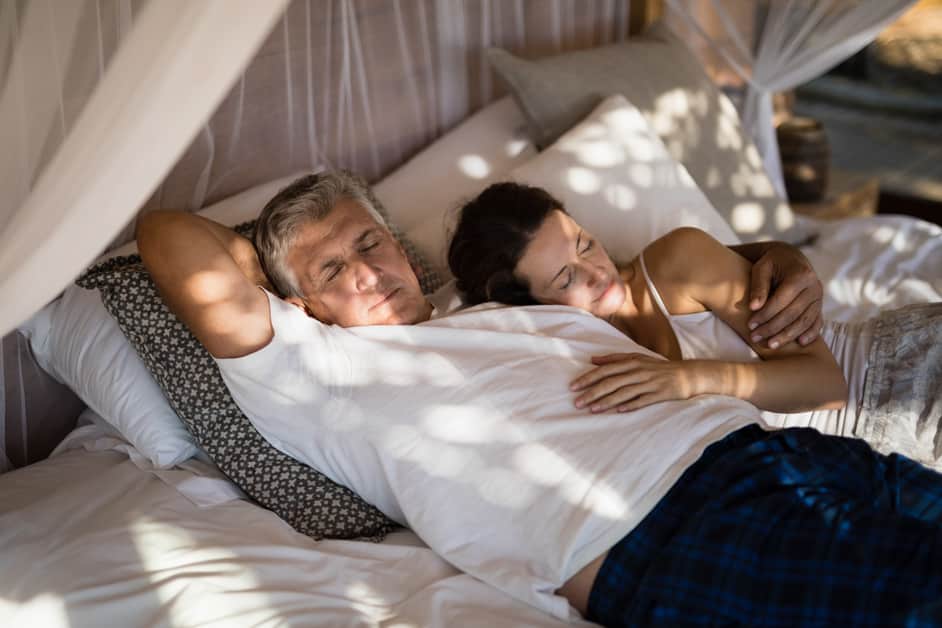Rest and Recovery for Knee Pain Relief
Rest and recovery are key for any wellness routine, but especially when it comes to knee pain relief. Taking the right steps can help reduce and even stop knee pain. In this article, we will look into the best rest and recovery strategies for easing knee pain.
Identify the cause of the knee pain
Identify the cause of knee pain first. It could be an injury or a chronic condition like arthritis. Get professional help to find the source of the pain. Rest and physical therapy are likely recommended for recovery. Avoid activities that stress the knee for weeks.
Low-impact exercises for knee rehab can help. Heat/cold packs and topical creams can reduce swelling, and help relax tight muscles around the joints.
Create a rest and recovery plan
Creating a successful and effective rest and recovery routine for knee pain relief may seem overwhelming. Here are some tips to make it easier:
- Set realistic goals. Focus on gradually increasing time or frequency when doing exercises or using physical therapy devices. This will ensure consistent progress.
- Schedule your exercises. Do them regularly for best results.
- Find an exercise routine you like. Low-impact activities like yoga or swimming can help reduce stiffness, strengthen muscles, and reduce inflammation.
- Prioritize pain management. Use ice before and after exercise, and take anti-inflammatory medications if needed. Talk to a healthcare provider about any concerns.
- Take breaks when needed. Don’t push yourself too hard. Take short rests between sets, and don’t do more than one session per day or more than 20 minutes at once.
If any unusually severe symptoms occur during activity sessions, such as intense swelling or tightness around the knee joint area, seek medical attention immediately. This will prevent further harm and long-term debilitating complications. Implement these steps for successful recuperation and amazing total health!
Proper Posture
Having the right posture is vital for easing knee pain. When you sit, stand or walk, good posture reduces the strain on your knees. Plus, it’s beneficial for general health and can avoid other joint aches and muscle tension.
So, let’s look into proper posture for knee pain relief and the other elements that make up rest and recovery:
Learn proper posture for sitting, standing, and walking
Proper posture is very important for joint stability and muscle balance. When you sit, stand, and walk with the right posture, you reduce the stress on your muscles and joints. This helps to stop inflammation and tissue damage from stretched or strained ligaments and tendons.
When sitting, make sure your lower back has a slight arch. Tuck your tailbone into the chair to support your back. Put both feet flat on the floor, and make sure your thighs are parallel.
When standing, imagine a line from your earlobes to the ground through each foot. This ensures an equal weight distribution. Tuck in your tailbone slightly and keep your abdominals engaged, while keeping a normal breath pattern.
Finally, when walking, have good posture. This encourages a swing-through gait pattern—meaning one leg at a time transfers through gait cycles for the opposite arm-leg. Don’t transfer force from one side of the body to the other. Aim for even step lengths and bilateral knee alignment for proper foot mechanics.
Invest in ergonomic furniture
Invest in durable, ergonomic furniture for knee pain relief. Ergonomic furniture provides comfort, support and helps with posture. Look for adjustable pieces like armchairs and office chairs with adjustable seat heights, armrests, backrests, and lumbar support. Find a supportive, flexible chair with a headrest that cushions and aligns your spine.
Also, get a non-slip chair mat so you can adjust the chair without warping the floor. Last, invest in a memory foam mattress or pillows for body alignment and better sleeping.
Utilize lumbar support when sitting
Having the correct seating setup is vital for proper posture. If no chair with adjustable lumbar support is accessible, utilize a small pillow or cushion. This helps ease pressure on the lower back and encourages you to stay upright, yet relaxed.
- Keep feet planted firmly on the ground, and do not cross your legs while sitting.
- Also, try not to slump – this can put extra strain on your spine and cause discomfort in the future.
Exercise
Exercise is essential to relieving knee pain. Weak muscles and tight tissues often cause it. Doing exercises helps stretch and strengthen knee muscles, reduce inflammation and improve movement. Also, exercising regularly can reduce stress and anxiety – another source of pain.
So, let’s examine the best exercises for a better rest and recovery routine:
Strengthen weakened muscles
Strengthen weakened muscles with regular exercises. Choose basic ones or an intense routine like circuit or strength training. Physical activity is key for developing muscle tone and strength. Start with simple exercises, such as squats and push-ups. If familiar with weight training, use light resistance. Maintain good form and posture to prevent injuries and strains. Warm up before exercise and cool down afterwards.
Stretch tight muscles
Stretching is great for any exercise routine – especially for those with chronic knee pain. It helps flexibility and reduces tension in the joints.
Speak to a healthcare provider or physical therapist for advice on your muscle tightness and the right stretches for you. When stretching alone, warm up with low-impact cardio first and use proper form.
Static stretching is best after a workout. Follow guidance from a professional or video instruction. Don’t bounce. Stretch slowly until you feel tension, not pain. Do each stretch for 30 seconds and repeat it twice.
Dynamic stretching is done before physical activity like running or sports. It increases range of motion, prepares muscles and minimizes injury.
Incorporate low-impact cardio
Low-impact cardio exercises are great for knee pain relief. Try walking, biking, or water aerobics for 20-30 minutes. Start off slow and gradually increase the intensity. Focus on proper form and don’t overexert. Don’t forget to stretch before and after! Take breaks between sets to rest and recover. This will help prevent fatigue and tension buildup.
Use proper form when lifting weights
Lifting weights? Use proper form! This reduces risk of injury and helps you gain muscle. With weight machines, muscles push in a straight line. Don’t angle or jerk your joints. Take time to carefully complete each move. Target muscles, not momentum from other parts of your body. Both feet flat on the ground. This reduces knee pain and damage.
With free weights like barbells or dumbbells, don’t let elbows travel too far back. This ensures you use targeted muscles and don’t strain ligaments and tendons.
Cool down with stretching exercises focusing on hip flexibility, not knee range of motion.
Increase intensity gradually
To ease knee pain while still exercising, increase intensity and duration gradually. Take small steps and rest if needed. Let your body be your guide. This will help you increase exercise without causing strain. Cross-training can also help with pressure on painful areas. Remember that duration doesn’t always mean more movement. Add strength and flexibility training too.
When it comes to improving rest and recovery, don’t increase intensity too fast or it could cause more harm than good.
Nutrition
Nutrients are vital for rest and recovery. They give the body what it needs to heal from an injury, and help ease knee pain. Eating a balanced diet full of whole foods and nutrients can reduce inflammation, and help loosen up the joints.
Now let’s see how adding the right foods to your diet can make your rest and recovery routine more effective for knee pain relief:
Eat a balanced diet
If you’re suffering from knee pain, having the right nutrition is critical for healing. Eating a balanced diet means your body’s getting all the vitamins and minerals it needs. Maximize your recovery and reduce any ongoing pain by eating from these food groups:
- Fruits: Fresh fruits are best; limit juices as they may contain added sugar. Great snacks include nut butters, apples with almond/peanut butter, or Greek yogurt and berries.
- Veggies: Eat lots of colour – broccoli, zucchini, kale, spinach, bell peppers. Steaming/lightly boiling preserves most nutrients.
- Protein: Opt for lean proteins such as fish, beans, legumes, quinoa. Have plant-based proteins twice a week – think tofu with teriyaki sauce over brown rice.
- Grains and Starches: Complex carbs come from wheat breads, long grain rices (brown instead of white), rolled oats, quinoa pasta and barley soups. These help muscle repair and give energy.
- Dairy: If your body can tolerate, dairy products provide healthy fats – organic cheese or low-fat yogurt. They contain lots of vitamins/minerals – try mixing lactose-free yogurts with fruit/nuts/seeds for lunch.
Hydrate properly! Water lubricates joints and reduces inflammation – drink plenty of it daily!
Increase your intake of anti-inflammatory foods
Foods with anti-inflammatory properties can help reduce knee pain. Ginger, turmeric, omega-3 fatty acids in wild-caught fish, walnuts, and flax seed oil are good for inflammation relief. Fruits and vegetables high in antioxidants like berries and dark leafy greens can help too. Whole grains contain vitamins and minerals like magnesium that help with sleep cycles. Incorporating these foods into your meals can help relieve knee pain and improve circulation. It may even help reduce or replace medication!
Stay hydrated
Hydration is key to recover from any knee injury or surgery. Your body needs fluids to keep healthy and if you don’t drink enough, oxygen won’t reach your tissues to help them heal. Water’s the best for this, and it helps regulate your temperature and move nutrients in and out of cells.
When being active or doing exercise, electrolyte drinks like sports drinks are great for replacing lost sodium and potassium.
To stay hydrated, drink water throughout the day instead of big amounts at once. Plus, avoid alcohol as it can cause dehydration and slow down recovery. If you have muscle soreness or fatigue after exercise or injury, use cold therapy – like ice packs or cold air machines – to reduce swelling and inflammation in the knee area.
Stress Management
Research is growing, showing stress management is key for knee pain relief. To recover and heal, taking time to chill and manage stress is beneficial. There are many ways to manage stress. Find what works best for you!
Identify and address sources of stress
Identify and address sources of stress. This can include work, relationships or memories. Focus on self-care activities like exercise, socialization, nutrition and leisure activities. Structure meals, sleep time and recreation for better control.
Take 10 minutes a day to relax with meditation or journaling. Practice yoga or tai chi to relax muscles and calm the mind. Get social support from friends and family to help manage stress.
Practice relaxation techniques
Relaxation techniques are essential to managing stress and knee pain. To practice progressive muscle relaxation (PMR), tense and relax your muscles from your toes to the top of your head in five-second increments. Doing this twice a day can help reduce knee pain flare-ups.
Yoga and meditation can also help you become aware of your body’s tension levels. Certain yoga poses can improve range of motion in the knee joint, and deep breathing can strengthen mind and body endurance. Mindful meditation can bring balance between spiritual and physical components, and reduce cortisol and inflammation.
Lastly, listening to calming music can help you relax both mind and body, leading to reduced knee discomfort due to stress or wear & tear activities.
Get adequate sleep
Sleep is essential to managing stress. It repairs the body and mind. Not sleeping leads to more stress hormones like cortisol. This affects the body in a stressful way. Fatigue can weaken coping skills when facing stress.
To get good sleep, create a consistent pattern. Go to bed and wake up at the same time each day. Reduce stimulants like caffeine before bedtime. Make sure your bedroom is restful. Don’t work in bed. Keep screens away. Do relaxing things before bed. Set the right temperature. Block natural daylight with curtains or blinds.
Using these strategies can reduce stress by allowing for good rest:
- Create a consistent pattern.
- Reduce stimulants like caffeine before bedtime.
- Make sure your bedroom is restful.
- Don’t work in bed.
- Keep screens away.
- Do relaxing things before bed.
- Set the right temperature.
- Block natural daylight with curtains or blinds.
Frequently Asked Questions
Q: What are some tips for improving your rest and recovery routine for knee pain relief?
A: Some tips for improving your rest and recovery routine for knee pain relief include: taking regular breaks from strenuous activity, using ice or heat therapy as needed, stretching your leg muscles, and strengthening your leg muscles with exercises. Additionally, taking over-the-counter pain relievers, such as ibuprofen, may be beneficial.
Q: How often should I be taking breaks from strenuous activity for knee pain relief?
A: It is recommended to take regular breaks during activities that involve a lot of standing, walking, or running. This can help to reduce the amount of strain on your knees, which can help to reduce pain. Additionally, it is important to take breaks throughout the day to stretch and rest your leg muscles.
Q: How can I strengthen my leg muscles to help relieve knee pain?
A: Strengthening your leg muscles is an important part of relieving knee pain. Some exercises that can help to strengthen your leg muscles include squats, lunges, leg raises, calf raises, and step-ups. Additionally, using resistance bands or weights can help to increase the intensity of your workouts and help to build strength.





